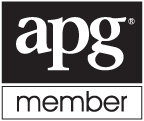What do Feast Days mean for Genealogy?
Hello everyone! It’s December and that means all things Christmas! Long ago, Christmas was considered a Feast Day and that’s what we will be talking about for today and Friday.
What if you run across a church record that doesn’t have a numerical date for the event? Instead, it has a word or an abbreviation that describes the day the event took place. What do you do then? How do you find the correct date for that event?
I had this happen in my family tree when I started searching in the 1700s for birth and marriage records. It started listing dates such as “Dom. Advent., Dom. Native., Dom. Palmarum…” I found out through research that these dates are called Feast Day Dates.
In history, there have been three different types of calendars. There was the church or liturgical calendar, the Julian calendar, and the Gregorian calendar. The Liturgical calendar marked events according to where they fell on a Sunday before or after a feast day. Christenings, marriages, and burials usually happened on a Sunday and the minister would then record that event saying it happened the 3rd Sunday after Christmas. Some feast days were fixed such as Christmas; however, many feast days moved around according to the year such as Easter Sunday. In addition, the ministers would use Latin in describing the feast day. Therefore, Dom. Palmerum is Latin for Palm Sunday.
The Julian calendar is more familiar to us because this one uses the B.C. and A.D. after the number according to Jesus Christ’s birth. In addition, this calendar first started using 12 official names for 12 months and using a certain amount of days for each month. Julius Caesar started this calendar in 45b.c. and it lasted until the 1600s.
In the 1600’s scientists and astronomers discovered that the Julian calendar was off by eleven days according to their calculations. Pope Gregory XVIII gave permission for the necessary changes to be made to the calendar. During the 1700s, most countries moved toward the Gregorian calendar including America. It depends on the country to know the exact date of the change. Norway, Denmark, and Iceland changed over in 1700, Sweden and Finland changed over in 1753. We use this calendar today.
Knowing the calendar history will help you determine which calendar the person used to record that event. If it’s a church event, then the person will most likely use the Liturgical calendar. If it’s a civil event, then they might use the Julian or Gregorian calendar.
I will give more examples and case studies in using these calendars in my next post. Hopefully, if all goes well, I will provide a step by step guide to show you how to use the feast day calendar. In the meantime, I will provide links to various articles that give more in depth history and how to apply the calendars to your research. You’re welcome to take a look now and see what you can do with them.
Scandinavia Feast Day Calendar, this one has a link to each country and their feast days.
When I first learned about this topic, I was overwhelmed. However, the more I practiced the better and more comfortable I became with it. I now get excited when I find a document that used feast day dates. I know where to go and what to do with them. I hope in time that you will as well.
Good luck and happy hunting!
Tiffany


